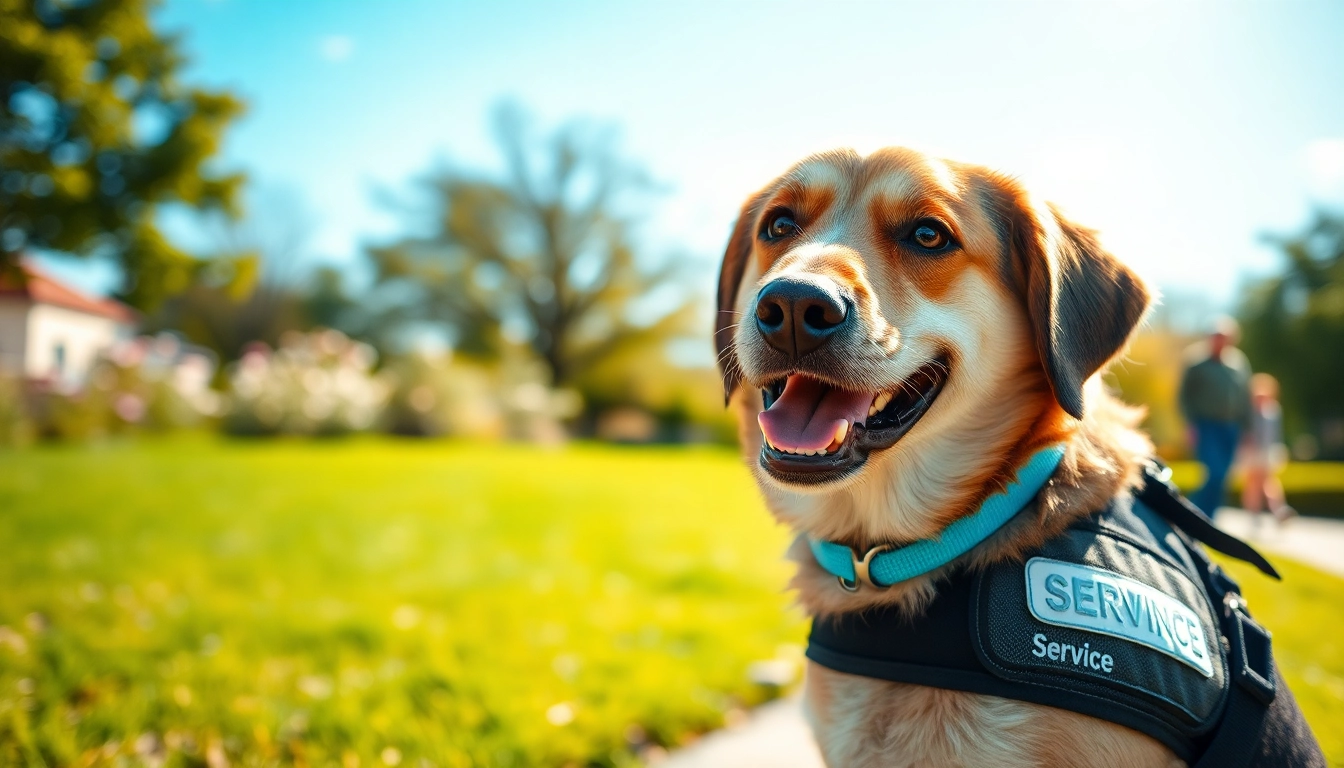Understanding Service Dogs
What is a service dog?
Service dogs are highly trained animals that provide assistance to individuals with disabilities, making their daily lives more manageable and independent. Unlike emotional support animals or therapy dogs, service dogs are trained specifically to perform tasks that mitigate their handler’s disability. Tasks can range from guiding a visually impaired person to alerting someone with a hearing impairment or even providing support for individuals with psychiatric conditions, such as PTSD.
Types of service dogs and their roles
There are various types of service dogs, each tailored to assist individuals with specific disabilities. Some of the most common types include:
- Guide Dogs: These dogs assist individuals who are blind or visually impaired, helping them navigate their environment safely.
- Hearing Dogs: Trained to alert deaf or hard-of-hearing individuals to important sounds like doorbells, alarms, or crying babies.
- Mobility Assistance Dogs: These dogs help individuals with mobility impairments by providing support for balance, picking up dropped items, and retrieving objects.
- Medical Alert Dogs: Trained to alert their owners to medical emergencies, such as low blood sugar or seizures.
- Psychiatric Service Dogs: Support individuals dealing with psychological conditions by performing tasks such as grounding during anxiety attacks or providing a sense of security.
Legal definitions and rights for service dogs
Service dogs are protected under the Americans with Disabilities Act (ADA), which defines them as dogs that are individually trained to perform tasks or do work for people with disabilities. This law grants service dogs access to public places, including restaurants, stores, and transportation. However, it is important to note that the ADA does not recognize emotional support animals as service animals, which can result in varying rights in public spaces.
Eligibility Criteria to Get a Service Dog
Disabilities that qualify you to get a service dog
To qualify for a service dog, individuals must have a diagnosed disability recognized under the ADA or similar state laws. Some examples include:
- Visual impairments
- Hearing impairments
- Mobility challenges
- Severe emotional or psychological disorders (e.g., PTSD, severe anxiety)
- Medical conditions that require monitoring (e.g., diabetes, epilepsy)
Documentation and assessments required
Before you begin the process to get a service dog, you will need proper documentation. This typically includes:
- A letter from a licensed healthcare professional stating your diagnosis and the need for a service dog.
- Medical assessments that may demonstrate your disability and the necessity of having a service animal.
Important considerations before applying
Before starting the application process, consider the following factors:
- Assess your lifestyle and living situation to ensure it is suitable for a service dog.
- Understand the commitment required for care, training, and bonding with a service dog.
- Research various service dog organizations to find one that aligns with your needs.
The Process: How to Get a Service Dog
Finding a reputable service dog organization
Choosing the right organization is crucial in the process of acquiring a service dog. Look for organizations that are accredited by credible agencies such as Assistance Dogs International (ADI). These organizations typically follow rigorous training standards and ethical practices in dog selection and training.
Steps to apply for a service dog
The application process generally involves a few essential steps:
- Complete an application form detailing your disability and the tasks you expect the dog to perform.
- Submit the required documentation determining your eligibility.
- Undergo any necessary assessments, which may include interviews or home visits.
- Once accepted, you’ll be placed on a waiting list or matched with a dog based on your needs.
What to expect during the training process
Training is a critical component of preparing a service dog for their role. You can expect:
- Intensive training for the dog, usually lasting several months, focusing on specific tasks relevant to your disability.
- Interactive training sessions with you, the handler, to establish a reliable working relationship.
- Follow-up training and support as needed post-placement.
Costs Involved in Getting a Service Dog
Understanding the expenses associated with service dogs
Getting a service dog can involve considerable costs, which may include:
- Application fees specific to the organization.
- Training costs for the dog, which can range from $15,000 to $30,000.
- Ongoing care, including veterinary bills, food, grooming, and supplies.
Options for financial assistance
Many organizations provide financial assistance or sliding-scale fees based on income. Additionally, some nonprofit organizations or grants may offer support for those who qualify. Research these options thoroughly to ease financial strains.
Potential grants and programs available
Various grants and programs may provide funding for service dog acquisition. Consider exploring:
- Local and national nonprofit organizations dedicated to supporting individuals with disabilities.
- Veterans’ assistance programs for those who have served in the military.
- Community-based programs that offer training and placement services at little to no cost.
Caring for Your Service Dog
Daily needs and maintenance
Caring for a service dog is a commitment that encompasses daily needs such as:
- Regular feeding and access to clean water.
- Routine exercise to keep the dog physically and mentally stimulated.
- Monthly grooming, veterinary check-ups, and vaccinations.
Training tips for successful partnerships
Continuous training and reinforcement are essential in establishing a strong partnership between you and your service dog. Incorporate the following tips:
- Use positive reinforcement techniques to encourage desired behaviors.
- Consistently practice commands and tasks in various environments to improve the dog’s adaptability.
- Maintain regular training sessions to strengthen the bond and ensure compliance with tasks.
Building a strong bond with your service dog
Establishing a deep connection with your service dog enhances both their ability to assist you and the overall quality of your companionship. Focus on:
- Spending quality time together, whether through play, walks, or relaxation.
- Understanding your dog’s body language and responses to foster effective communication.
- Being patient with the training process—building trust takes time and effort.



